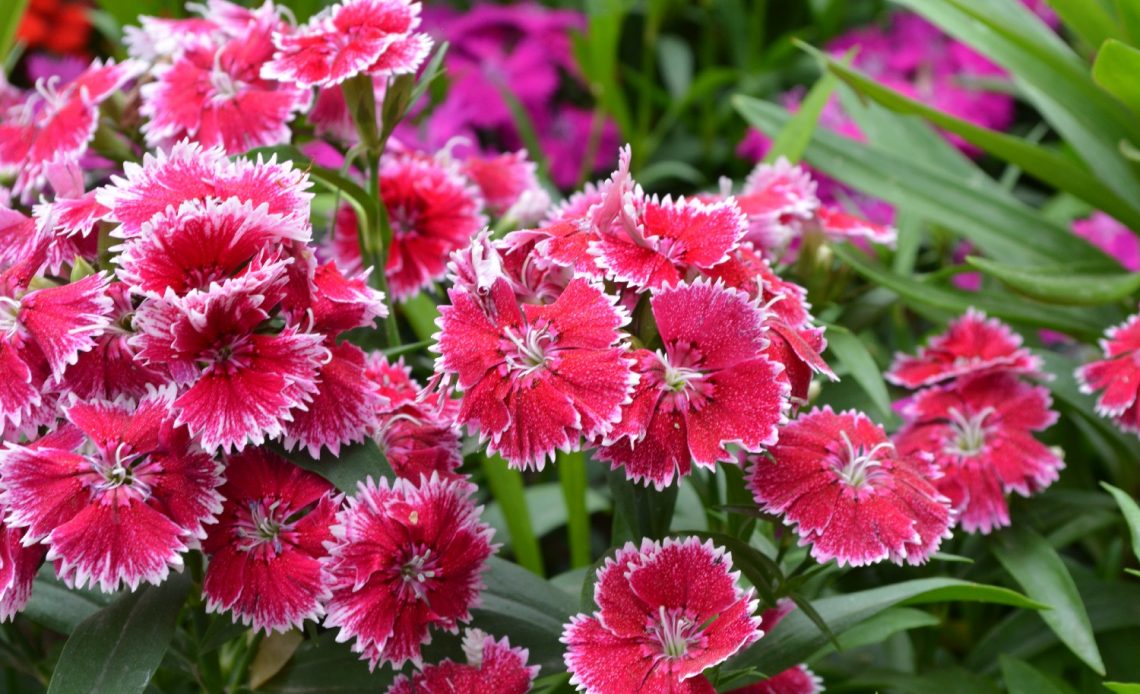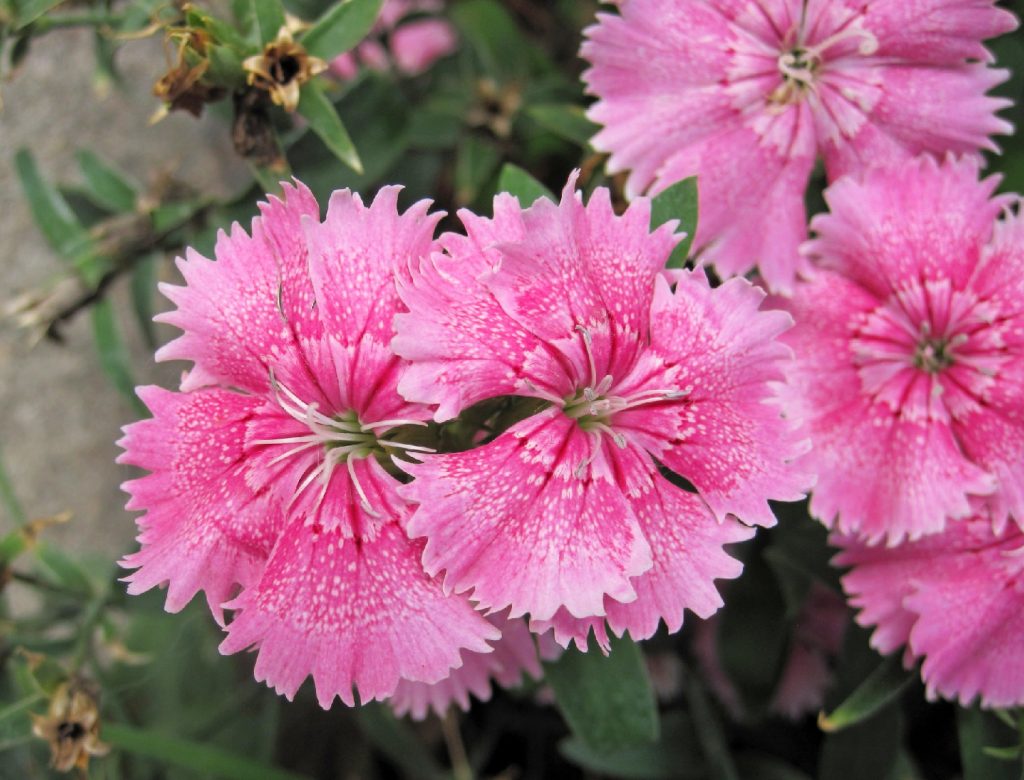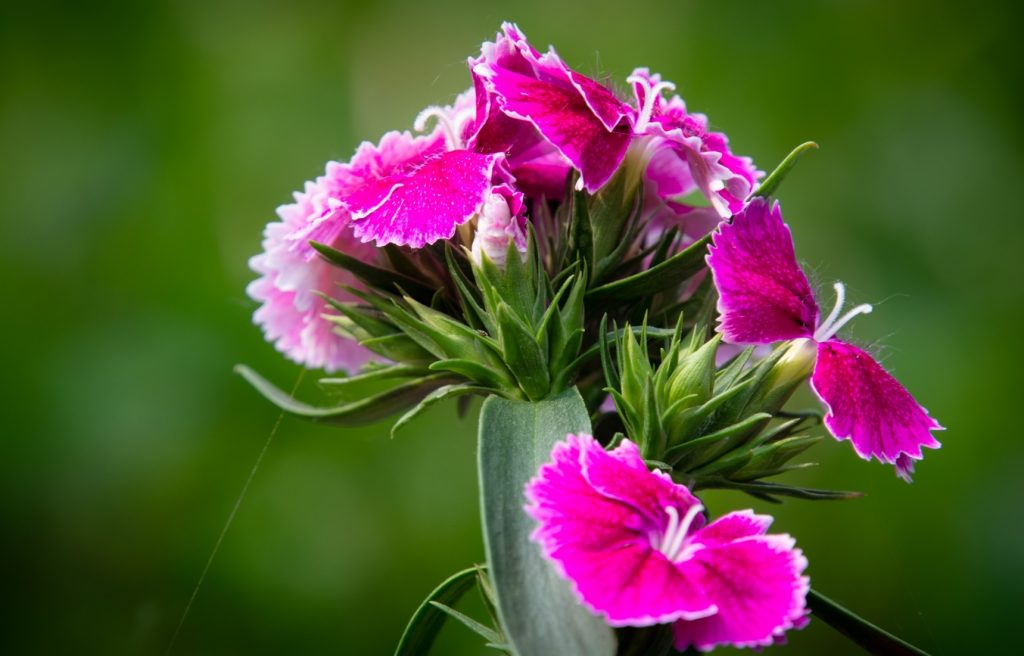

We’re here to help! Wild Yards is a completely free website that is 100% dedicated to helping you create a wildlife-friendly, sustainable yard. Read more
WildYards is reader-supported. When you buy a product through a link on our site, we may earn a comission. Every product is independently selected by our (obsessive) editors and our reviews are unbiased and objective. Read more about our mission or our privacy policy.
Dianthus plants, also known as carnations, cottage pinks, and sweet williams, are commonly found across the US. They’re fantastic at attracting all kinds of pollinators – but how do they fare with larger animals? For example, do deer eat dianthus?
Deer normally won’t eat dianthus. There are hundreds of different species of this plant, and many of them will deter deer thanks to their strong fragrances. Deer will also steer away from dianthus as some species may be toxic for them to ingest.
Why don’t deer eat dianthus?
Deer don’t like dianthus due to their smell, taste, and toxicity – they are highly potent flowers that can cause digestive problems for these opportunistic feeders. Plants such as lavender and sage have the same effect on deer due to their strong fragrances – these wild visitors have evolved to avoid certain plants simply because they smell poisonous!
Additionally, strong-smelling flowers can prove distracting to deer. Deer have powerful senses of smell that they need to help find food and water and to keep predators at bay. By smelling potential predators at long distances, they can safely escape. When their olfactory senses are overwhelmed by flowers such as dianthus, this can become difficult to manage.
Deer taste buds can also be fairly particular. While they are opportunistic feeders, sour or spicy tasting plants and flowers are instant turn-offs for these animals. They tend to prefer plain or blander-tasting food and have a particular taste for sweet fruit and vegetables. Oranges, bananas, and apples, for example, all prove to be tasty treats for many species of deer.
Over dianthus, deer will also prefer blooms in the form of hibiscus and azaleas, for example – because they are fairly ‘unproblematic’ in terms of texture and taste. Beyond this, many dianthus plants could cause serious harm to the average deer if they choose to eat them.
Dianthus toxicity can prove hazardous for the average deer, despite the fact that their flowers can be used in some recipes fit for human consumption. Deer have complex ruminator digestive systems, which means they have four main compartments. The rumen is the center of digestion in deer species, and to work efficiently, it relies on an abundance of water, ammonia, and an acidic pH.
Deer stomachs simply haven’t adapted to process many dianthuses – and as such, they’ve selectively evolved to stay clear of the plants unless they are starving. This behavior can be taught to fawns, too, through observing how older deer feed in the wild.
Conversely, many deer can safely eat mushrooms that otherwise prove poisonous to humans – meaning what’s good for you may not always be good for them, and vice-versa.

Are dianthus plants truly deer-resistant?
Generally speaking, yes, dianthus plants are deer-resistant – but this isn’t a term you should follow to the letter. As opportunistic species on the brink of starvation at any point, deer will eat what they have to when they have to. Depending on the season, the weather, and the area, food can be scarce for deer – meaning they may have to resort to eating plants such as dianthus for desperate calories.
Unless you are growing flowers in a generally arid climate with a lack of available plant life or fungi growing in the local area, your dianthus plants are likely safe from deer attacks. That doesn’t mean, of course, that they are completely safe from animal attacks otherwise.
Do I need to protect my dianthus from deer?
There’s not much need for you to worry about protecting dianthus from deer attacks – the only reason they may pose a threat is if they trample them on their way in and out of your yard.
Many people use dianthus to help protect flowers deer will commonly eat. For example, gardeners may choose to grow dianthus amongst similar-colored blooms such as petunias. The latter are commonly eaten by deer – and will blend in well alongside dianthus, offering something of deterrent protection.
The best way to steer deer away from plants they love eating is to simply grow them closer to your home. Growing dianthus on purpose purely to deter deer may be considered cruel thanks to their toxicity. If you can help out, try and grow dianthus away from the edge of your yard, and even in raised pots. If you’re already growing dianthus in your garden, now may be the time to move them somewhere a little trickier for deer to access – for their safety.

What animals choose to eat dianthus?
Dianthus plants typically prove popular with small mammals such as rabbits, and a variety of different insect species.
Many gardeners often plant dianthuses believing they will help keep rabbits away from their gardens. While there is a logic behind that thinking, it just doesn’t work in practice. While rabbits are just as susceptible to dianthus poisoning as deer, these destructive critters are much less discerning than their larger counterparts. Wild rabbits will happily munch through any abundant vegetable or plant life that smells or looks tasty enough – and will blindly suffer the consequences later.
With this in mind, if you’re losing dianthus plants regularly, it’s more likely to be rabbits – than deer – clearing up your plot. Deterring rabbits humanely may be as simple as planting flowers they actively avoid – such as Shasta daisies and lavender. There are few growths rabbits won’t eat, so choose your blooms wisely. You could choose to plant complementary lavender around your dianthus to prevent rabbits from visiting and eating your blooms – most deer dislike lavender, too.
Regrettably, a bigger problem than rabbits or deer for dianthus is an onslaught of insect visitors. Spider mites and aphids, for example, are big fans of dianthus plants, commonly feeding on the sap and leaving plant diseases such as necrotic fleck behind.
While it may be easy to spot damage done to your dianthus, insects themselves are not always so easy to find. Many dianthus munchers will make nests underneath the leaves and out of eyesight. Unless you get to the ground and inspect carefully, it’s not always easy to know whether or not you have a problem.
Keeping insects away from various plants can be taxing if you wish to avoid using chemicals and pesticides. Many sources suggest using homemade concoctions like vinegar or garlic-based sprays, or even basic soap. Alternatively, welcoming animals such as woodpeckers and hummingbirds to your garden can help to keep plant pest populations low.
Never use chemicals on your dianthus – you stand to risk the life of your plant, and of any animals that visit your yard.
What other plants do deer dislike?
Plants and other growths such as elephant ears, cucumber plants, daffodils, ferns, and coleus are perfect for deterring deer. Many refer to them as deer-resistant, but as with dianthus, these creatures will eat any flowers they otherwise avoid if there’s no other food available.
You’re usually safe to grow dianthus in your garden and shouldn’t need to worry about deer eating through these plants. You should instead be careful to grow these flowers away from animals’ entry points into your garden – as they can be highly toxic! Conversely, remember that dianthus will attract butterflies in droves – so don’t give up on growing them altogether!
